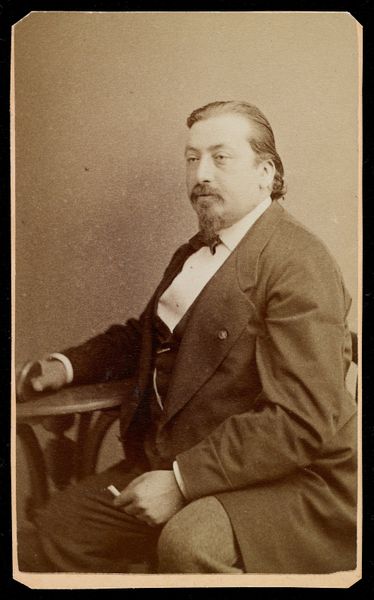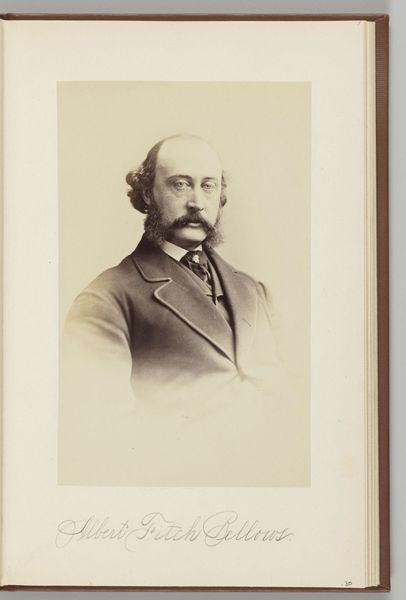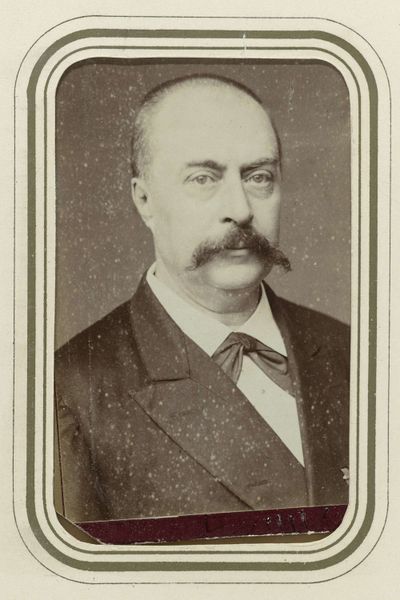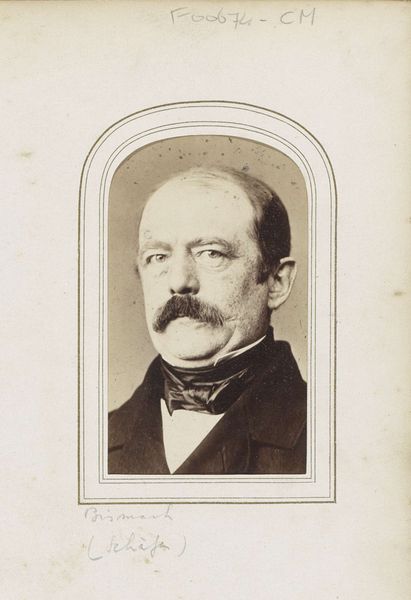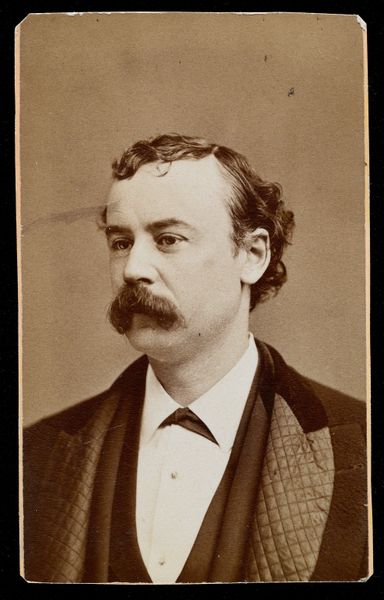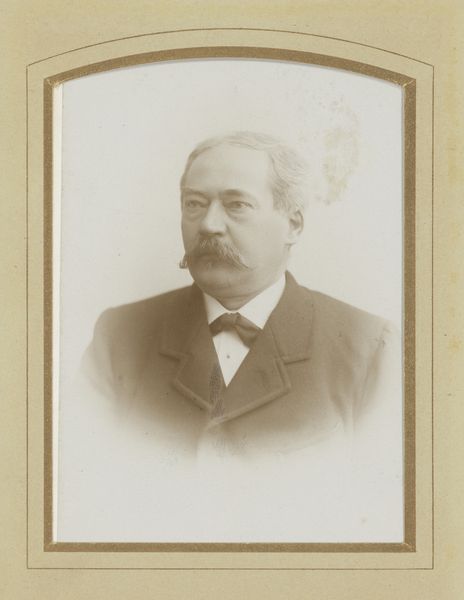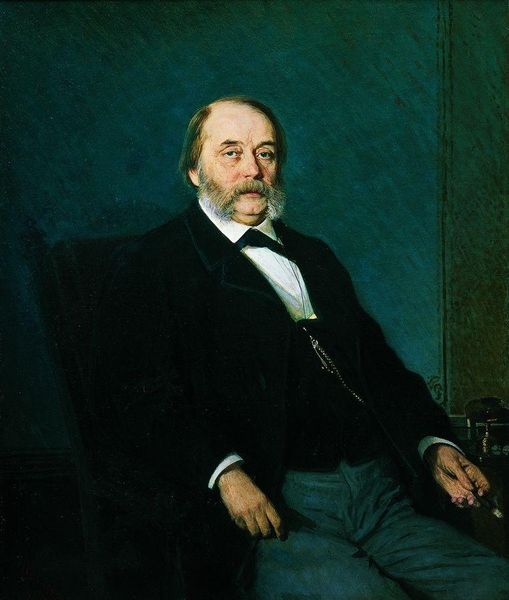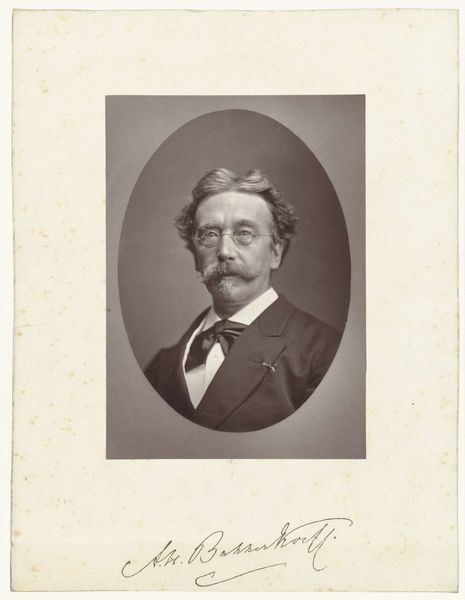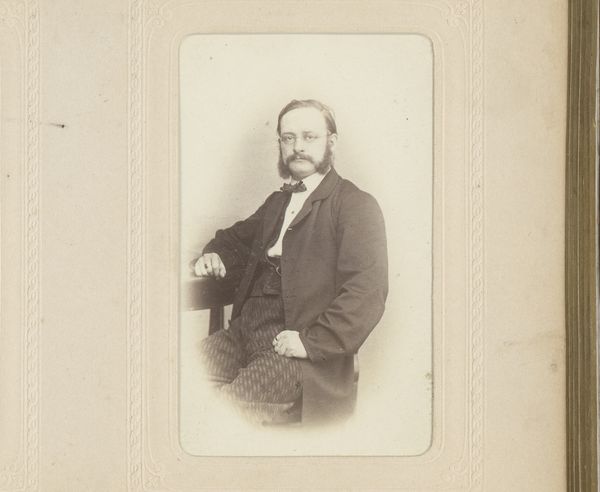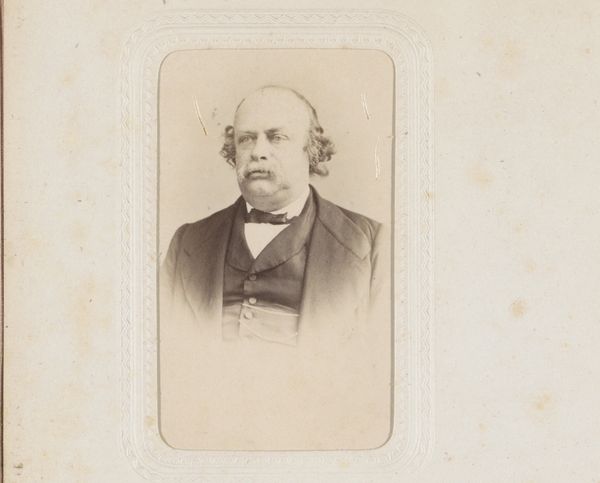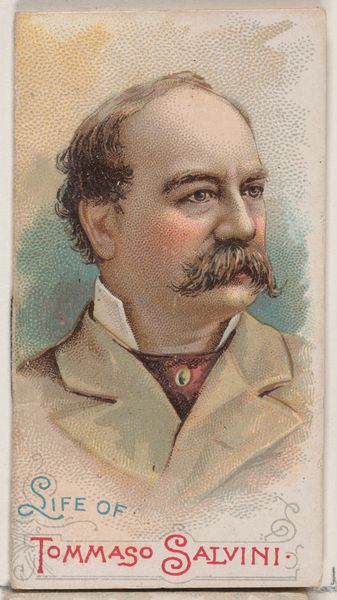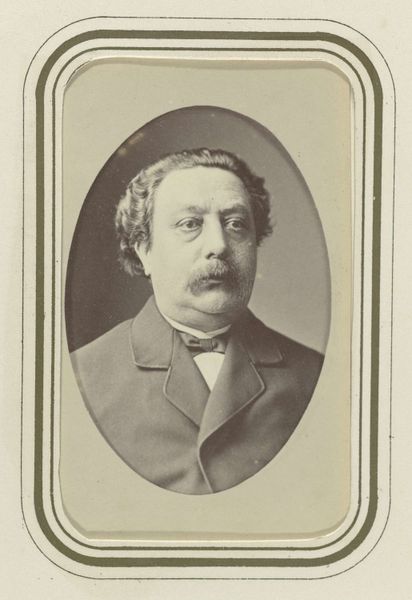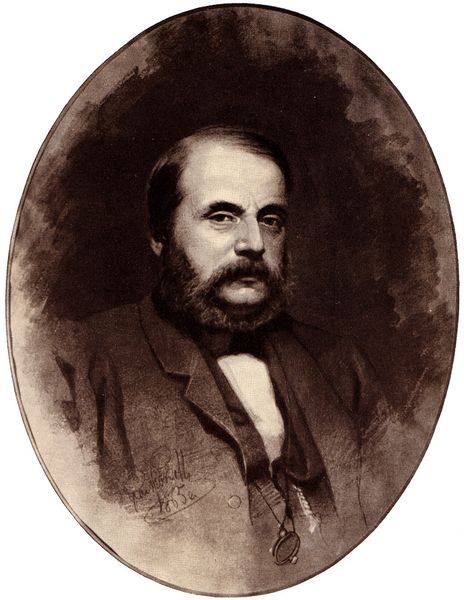
etching, photography
#
portrait
#
portrait image
#
portrait
#
etching
#
photography
#
male portrait
#
portrait reference
#
portrait head and shoulder
#
portrait drawing
#
facial portrait
#
portrait art
#
fine art portrait
#
realism
#
digital portrait
Copyright: Public domain
Curator: This is Félix Nadar's 1869 portrait of Gustave Flaubert. It's a photographic etching, and one of the many portraits Nadar made of prominent figures of his time. Editor: My first impression is of incredible softness. The sepia tones create this almost dreamlike quality, despite the hyper-realistic detail in Flaubert's face and especially in his elaborate mustache. Curator: Nadar's portraits were revolutionary because he stripped away the usual romanticized settings and props. He was really aiming to capture the sitter's character, their intellectual spirit. This photograph was produced during a pivotal time when photography was used to define physiognomy to re-affirm racist scientific discourse. Editor: You can see it in Flaubert's eyes, which are really the focal point. The composition draws you in, starting with the darker areas around the jacket and bow tie, and then it all directs your attention right to those knowing eyes. And notice the subtle gradient from light to shadow. It sculpts his face, adding depth. Curator: Flaubert's novels often challenged the bourgeoisie and exposed hypocrisy, even at the risk of being charged with obscenity. Nadar also had a radical, anti-establishment bent, which is evident in his photojournalism of Parisian life, but particularly in the portraiture of figures who sought progress. This portrait can be seen as Nadar's interest in displaying literary greatness but, as many, falling prey to racist physiognomy studies. Editor: True, yet it's so much more than just a document of someone's likeness, or a reinforcement of racist claims. Nadar transforms this simple portrait into a character study through careful manipulation of light, shadow, and focus. He presents to us more than what one can assume when first viewing. Curator: And looking back at Flaubert's novels through the lens of queer theory and postcolonial studies can give us new readings. In some cases there are overtly queer and non-white/Western coded undertones, themes, and characters. Editor: Precisely! Close formal analysis combined with contextual understanding provides a fuller understanding of the artwork and time in history, for today and into the future. Curator: Indeed, there are multiple lenses and analyses, which provides new interpretations to better consider and assess.
Comments
No comments
Be the first to comment and join the conversation on the ultimate creative platform.
